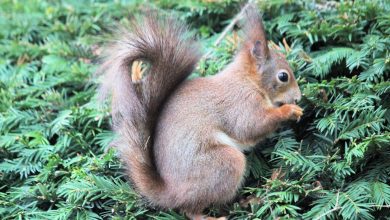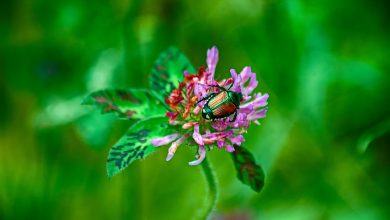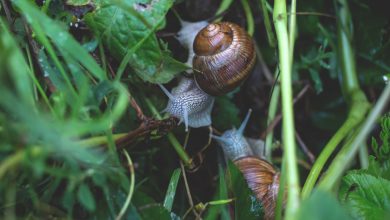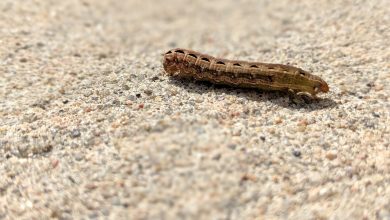How to Get Rid of Aphids
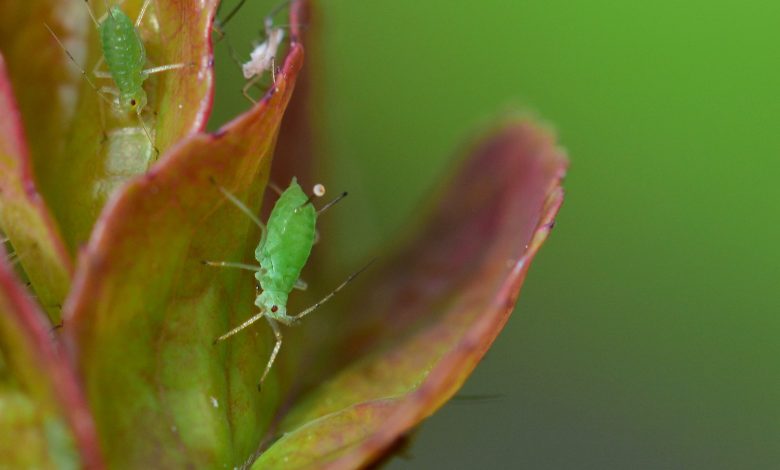
Aphids can rain on the parade of even the most masterful gardeners; luckily, there’s still hope for your garden! Acting quickly will be important to get these creatures under control.
If you have aphids in your garden, you’re going to need some help. This is the ultimate guide for one of the most well-known garden pests. We’ll provide you with everything there is to know about aphids and how to get rid of them for good.
The Aphid
Aphids belong to a superfamily that is known as Aphidoidea. There are approximately 5,000 different species in this family, with approximately 400 of them found on food and crops. When it comes to agriculture and forestry, aphids can cause some serious issues with their huge numbers and serious appetites.
In temperate regions, the aphid is easily one of the most destructive pests and therefore the least pleasing to see. They are distributed worldwide, so almost everyone knows the plight of the aphid. However, they are most commonly seen in temperate regions.
One of the ways that these pests have managed to travel so far is simply through strong winds. The pests have the ability to reach as high as 2,000 feet, where they can be picked up by very strong winds and taken to new locations.
Humans can also be partially blamed for their wide distribution, mainly through the transportation of crops and plants that have already been infested.

Physical Attributes of the Aphid
Naturally, with so many different species of the aphid, not every kind looks the same. Aphids come in a wide range of colors and shapes, but they are all working towards the same goal.
The body of the aphid is soft and can be seen in green, pink, black, brown, or clear. You will see two distinct antennae on the head of an aphid, usually dark in color. Additionally, they only have one pair of eyes that are set on either side of the head.
One of the main features of aphids is their mouthparts, which are known as stylets. This part of the body is what they use to suck out the sap of crops and plants.
The legs of the aphids are long and thin with two joints. In most cases, gardeners will notice that aphids are wingless; however, many species will breed winged aphids at specific times of the year.
On some occasions, host plants will begin to die or run out of their food source for the aphids. In these instances, it is also common for winged offspring to occur so that the new insects will be able to relocate to a fresh supply of sap.
The Aphid’s Diet
The various species of aphids have different preferences when it comes to what they like to eat. In some cases, aphid colonies will only ever feed on one type of plant, which is referred to as monophagous.
Other aphids are a little less picky and will be happy to feed on thousands of different plants throughout the year. Approximately ten percent of all aphid breeds will feed on various plants throughout their lifetime. Naturally, these are the aphids that are harder to get rid of, since they are happy to move from one plant to another if any sort of insecticide has been used.
Aphids use their stylus to probe into a plant, where the phloem vessel is punctured. Any sap found in this area is immediately forced up into the food canal of the aphid. If for any reason the sap does not involuntarily transfer into the food canal, the aphid is also equipped with the ability to manually draw the fluid with a built-in pump mechanism.
To choose a plant that is suitable for a colony of aphids, a winged adult will begin the search on their own. Upon landing, the aphid will probe the surface with its stylus, tasting the sap of the plant and tasting the phloem.
Breeding of the Aphid
One of the reasons that aphids are so hard to get rid of is that they can reproduce both sexually and asexually. That is, the female aphid does not always need her eggs to be fertilized before they are capable of hatching.
Another reason aphids can be so devastating to a garden is that aphids begin to develop inside the egg immediately following ovulation. This means that. while a female adult is still in possession of her eggs, those eggs themselves could already be developing their own embryos.
With so much reproduction happening at every stage of the aphids’ lives, it almost seems like an impossible game to win. Some aphid species can produce up to 40 generations in a single season; this equates to millions and even billions of aphids.
The main goal of any female aphid is to live on one source of food for an entire year. If they can find this key source, they will remain on the host through every season and continue to reproduce both sexually and asexually all year.
In some cases, female aphids can spend the entire year laying eggs, having never reproduced sexually the entire time. In fact, there are no known aphid species that rely solely on sexual reproduction; all varieties practice asexual routines in some capacity.
Even though a female aphid would be happy to remain on one plant all year-round, this usually isn’t possible in temperate locations. During colder seasons, the female will live and overwinter on a host that is wood-based. During the summertime, her regime will include feeding off a secondary host that is normally herbaceous.
The summertime is when female aphids reproduce the most, and this is when most gardeners are having to work the hardest to prevent and/or fight aphid populations. These annoying pests have been able to defend themselves against many gardener tactics; however, there are some fool-proof ways to lower numbers or remove them altogether.
The good news in all of this is that aphids typically only live anywhere from 20-40 days long. If you are cautious of your garden and pay close attention to the pests that show up, you can take action to stop the next generation from taking over, too.
The Aphid-Dairying Ants Relationship
If you’ve ever looked closely at your plants and seen dairying ants, then you might be in for some trouble. That’s because where dairying ants go, aphids go as well.
Over time, the dairying ants have realized that they strongly prefer the honeydew excreted from the aphids. However, this honeydew substance is only found on the leaves and stems of the plants the aphids are destructing.
That being said, the dairying ants slowly began to seek out aphids, choosing to protect them from predators so that they can continue to produce their sweet honeydew. The ants will go so far as to stroke them with their antennae to help the milking process.
Additionally, dairying ants may even collect and store aphid eggs in their nests over the winter seasons and return them to the host plants when spring comes.
This relationship is quite an impressive one in the bigger picture, but the protection has made it even harder for natural predators to keep aphid numbers at bay.
Getting Rid of Aphids in Your Garden

Aphid Predators
One of the most natural and eco-friendly ways to get rid of aphids in your garden is to welcome in predators of the aphid. There are lots of insects who love to feed on aphids, and some can do a serious amount of damage in a single day to your aphid population.
Ladybugs
The ladybug is the most common predator that gardeners like to incorporate into their garden environment. This is in part because we’re very familiar with them, and they’re pretty to look at.
Ladybugs are great for your garden because not only will they snack on aphids, they can also snack on other pests like mealybugs and scales. They have the ability to eat anywhere from 50-60 aphids in a day, which can mean getting rid of aphids on a full flower from root to tip.
Ladybugs in both their adult and larval form will eat your aphids, so make sure you know what ladybug larvae look like. They have a long, segmented body and three pairs of black legs, along with red, black, and white coloring.
To attract ladybugs to your garden, it’s ideal to plant some of the leafy foods they love the most. These include: dill, celery, fennel, cilantro, yarrow, cosmos, and carrots. One of the best things about trying to attract ladybugs with this food is that they might also attract important pollinators, too!
If you don’t seem to be getting enough hungry ladybugs for your problem, you can always purchase ones that you can release into your yard. Do this in the evening, when they won’t be enticed to immediately fly away.
Passerine Birds
Not many people are familiar with the term passerine, but it’s a generalized term that includes more than half of all of the existing bird species in the world. They are from the order Passeriformes, and are more commonly referred to as songbirds.
This group of birds is characterized by one specific attribute, which is their perching toes. Exampleds of this type of bird include blue jays, sparrows, hooded crows, swallows, and finches. If there are enough birds in one area at any time, they can consume up to a million aphids in a day.
The biggest predator of the aphid in the passerine bird family is the American goldfinch. This species relies on the aphid for 83 percent of its diet. Suffice to say, providing songbirds with the things they need in your yard can help to reduce aphid numbers dramatically.
If you’re having issues with aphids, consider incorporating some more bird-worthy components in your space. This could include a fresh birdbath, birdhouses for shelter, and birdfeeders. Songbirds tend to prefer sunflower seeds, peanuts, elderberries, and corn.
There are other key predators of aphids, whose numbers you may not want to increase; however, knowing that they’re doing your garden good may stop you from trying to get rid of them. These predators include arachnids, such as the crab spider, parasitic wasps, and hoverfly larvae.
Insecticides
Insecticides work for a lot of the nasty pests that creep into your garden. However, the more we learn about aphids, the more we’re realizing that many of their breeds have evolved to survive insecticide attacks.
One of the main reasons for this is their sheer numbers. Even if you spray most of your garden thoroughly, missing any one leaf or flower could mean you’re missing hundreds of thousands of aphids that are living or that are about to be born.
Additionally, a variety of insecticides no longer do any damage to aphid populations, including carbamates, pyrethroids, and organophosphates.
The Water Spray Bottle
Some gardeners swear by the water spray bottle effect. Gardeners will simply use an aggressive spray nozzle or hose and spray away the aphids with a heavy amount of water. While some people swear by this, others aren’t convinced.
If your aphid numbers are large, spraying them with water might not kill them but rather displace them for a time. Not to mention, you could damage weaker garden plants if you’re having to spray them with heavy streams.
If you’ve got a small population of aphids and you’re trying to nip them in the bud, the water bottle effect will likely work for you.
Insecticidal Soap
Insecticidal soap is another home remedy that may kill a good handful of the aphids in your garden. Unfortunately, the soap only works if it comes into contact with each aphid; there will be no residual effects.
Additionally, depending on the mixture you use, soap spray can be bad for the soil and plants that you’ve planted there. Soap can dry them out quickly, especially if the temperatures are very warm when you use it.
Organic Neem Oil
Neem oil comes from the pressed seeds of neem trees. It is a safe option for gardeners, especially those who have pets and children roaming in their yards.
Neem oil works to disrupt the hormonal balance in aphids, which forces them to molt and die before they are ready to move onto their next stage of life. They struggle to grow to their full size, and they will have less of a chance of laying eggs before dying as well.
To use this kind of solution, mix two tablespoons for every one gallon of water. Mix the solution in a spray bottle and cover the infested plants so they are completely wet. Be sure to focus on the underside of the leaves where aphids like to hide.

Preventing Aphids
Most gardeners are all too familiar with the vision of their plants being ravaged by aphids. In response, some gardeners take preventative measures so that they never have to deal with these pests.
Organic Neem Oil
If you’re using neem oil for preventative measures, you’ll want to be diligent about how often you spray. This oil should be sprayed on your garden plants every seven or fourteen days consistently.
It is the smell of the neem oil on the plants that will help to repel the pests; in other cases where the pests land regardless, they will eat the sprayed leaves and eventually die.
By doing so, you can be sure that you’re not going to miss potential colonies that have arrived in between sprays. Waiting too long can mean giving a colony enough time to establish themselves and lay hundreds of eggs.
The best advantage of neem oil is that it will harm pests, but it will not affect your important pollinators. Any insect that eats the various parts of the flower will be killed, but butterflies, ladybugs, and bees do not eat the leaves.
Companion Planting
Aphids aren’t very picky, but there are some plants that they cannot stand smelling or being in close vicinity with. Companion planting takes advantage of this by planting things they hate near the plants they usually want to eat.
Some of the best things to plant to prevent an aphid intrusion include catnip, garlic, and chives. Aphids also tend to steer clear of gardens that are full of herbs, such as sage, oregano, basil, and green onions.
Avoid Overfeeding
Overfeeding is never good for any plant – not to mention, it will attract aphids. Plants that have been given too much fertilizer often become sappy, which is a huge attraction for the little pests. Follow fertilizing directions properly so that you don’t have two issues at once.
Getting Rid of Dairying Ants in Your Garden
Some aphid varieties will have a weaker defense mechanism if they can no longer enjoy the protection of dairying ants. You might try a few approaches to garden protection by fighting against the dairying ants who are promoting aphid numbers.
There are a few home remedies that can help to deter ants or to wipe out their entire ant nest altogether. These homemade mixtures have to do with the sensitivities of ants and their inability to digest certain human foods.
Garlic Mixture
Mix one tablespoon of very fine garlic with half a cup of hot sauce. Put the mixture into a spray bottle and top it off with water. This mixture can be sprayed all around your garden, including around your infected plants. Ants should begin to disappear after a few applications.
Baking Soda
There is something about baking soda that just doesn’t sit well with ants. Sprinkle this household staple all around your garden, and you’re likely to see numbers drop. This is a great trick because it’s safe for humans, pets, and other animals.
Polenta
If you’ve got some polenta to spare at home, save some of it to go after your ant infestation. Take the dry grits and sprinkle them all around your garden area; the ants will bring this food back to the nest, where they will struggle to digest it and die.
Coffee grounds have been suggested to sprinkle around the garden as well; however, the microorganisms in your soil will have to turn their attention to breaking down these grounds. This usually results in your garden flowers getting less care.
Fighting the Good Fight
There’s no doubt about it: Aphids are serious pests and they know how to irritate us and our plants. It can be a little overwhelming to see your plants covered in a sea of aphids, but don’t get ahead of yourself. There are quite a few things you can do to deter aphids from your garden.
Of course, preventative measures are best. If you have lots of edible flowers in your garden and not so many herbs, you might think about implementing some of them throughout your garden to deter the aphids. Additionally, neem oil is one of the best options for preventative use and existing colonies.
Every gardener, both new and expert, has had their issues with aphids. The main thing is to learn what deters the aphids in your space, and prepare for next season before they do!
